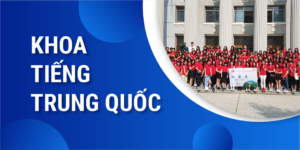- Câu hỏi 113844:
Read the text and choose the best answer.
In view of the inexorable progress in science, we can expect that the gene hunters will be replaced in the spotlight. When and by whom? Which kind of hunter will dominate the scene in the last decade of our waning century and in the early decades of the next? I wonder whether the hunters who will occupy the spotlight will be neurobiologists who apply the techniques of the enzyme and gene hunters to the functions of the brain. What to call them? The head hunters. I will return to them later.
The author implies that the most important medical research topic of the future will be
- Câu hỏi 113851:
Read the text and decide that the statement is True (T), False (F) or Not Given (NG).
In the 18th century, too, many new buildings were constructed. It was a prosperous period, when the new aristocracy paid for splendid buildings, banquets and balls, not to mention the latest fashions from Europe.
The rise of Napoleon in the early 19th century led to political changes throughout Europe. An uprising took place in Mexico in l810, with the aim of ending rule from Spain. This goal was finally achieved in 1821, when Mexico City briefly became the capital of the Mexican Empire. Since 1823, it has been the capital of the Republic of Mexico, apart from a short period, from 1863 to 1867, when the country was again an empire.
Spanish rule of Mexico ended in 1810.
- Câu hỏi 113860:
Read the text and decide that the statement is TRUE (T), FALSE (F) or NOT GIVEN (NG).
The first two decades of this century were dominated by the microbe hunters. These hunters had tracked down one after another of the microbes responsible for the most dreaded scourges of many centuries: tuberculosis, cholera, diphtheria. But there remained some terrible diseases for which no microbe could be incriminated: scurvy, pellagra, rickets, beriberi. Then it was discovered that these diseases were caused by the lack of vitamins, a trace substance in the diet. The diseases could be prevented or cured by consuming foods that contained the vitamins. And so in the decades of the 1920's and 1930's, nutrition became a science and the vitamin hunters replaced the microbe hunters.
Nutrition has been considered a key factor in finding treatment to many diseases.
- Câu hỏi 113861:
Read the text and choose the best answer.
The first two decades of this century were dominated by the microbe hunters. These hunters had tracked down one after another of the microbes responsible for the most dreaded scourges of many centuries: tuberculosis, cholera, diphtheria. But there remained some terrible diseases for which no microbe could be incriminated: scurvy, pellagra, rickets, beriberi. Then it was discovered that these diseases were caused by the lack of vitamins, a trace substance in the diet. The diseases could be prevented or cured by consuming foods that contained the vitamins. And so in the decades of the 1920's and 1930's, nutrition became a science and the vitamin hunters replaced the microbe hunters.
Which of the following can be cured by a change in diet?
- Câu hỏi 113863:
Read the text and Decide that the following statements are TRUE (T), FALSE (F) or NOT GIVEN (NG).
Almost everyone with or without a computer is aware of the latest technological revolution destined to change forever the way in which humans communicate, namely, the Information Superhighway, best exemplified by the ubiquitous Internet. Already, millions of people around the world are linked by computer simply by having a modem and an address on the 'Net', in much the same way that owning a telephone links us to almost anyone who pays a phone bill. In fact, since the computer connections are made via the phone line, the Internet can be envisaged as a network of visual telephone links. It remains to be seen in which direction the Information Superhighway is headed, but many believe it is the educational hope of the future.
Using the Internet costs the owner of a telephone extra money.
- Câu hỏi 113866:
Read the text and choose the best answer.
The first two decades of this century were dominated by the microbe hunters. These hunters had tracked down one after another of the microbes responsible for the most dreaded scourges of many centuries: tuberculosis, cholera, diphtheria. But there remained some terrible diseases for which no microbe could be incriminated: scurvy, pellagra, rickets, beriberi. Then it was discovered that these diseases were caused by the lack of vitamins, a trace substance in the diet. The diseases could be prevented or cured by consuming foods that contained the vitamins. And so in the decades of the 1920's and 1930's, nutrition became a science and the vitamin hunters replaced the microbe hunters.
The word "which" refers to
- Câu hỏi 113876:
Read the text and choose the best answer.
One of the most renowned Spanish architects of all time was Antoni Gaudi. Gaudi's emergence as one of 's preeminent artists at the end of the nineteenth century marked a milestone in the art world.
Gaudi's popularity helped to bring about the acceptance and rebirth of the Catalan language, which had been banned during the literature and art. Gaudi shares his Catalonian background with two other famous Spanish artists, Pablo Picasso and Miro. The diverse ethnic background of the region greatly influenced the work of Picasso and Miro, as well as Gaudi. Thus, their works were a combination of an old history and an active, vivid imaginary world. This has sometimes been referred to as the “Catalan Mind.” Yet it was perhaps Gaudi who had the greatest talent for bringing together diverse groups, ones which others viewed as being too diametrically opposed to be capable of coming together and co-existing amicably.
This was apparent not only in the artists and other individuals who surrounded him, but also in the varied styles and techniques he employed in his architecture. Much of his work can be seen in , where his structures are known as a fine representation of modernism. He also used a great variety of color in his buildings, and this art nouveau is often associated with his own unique style of design. All of these factors are what helped put him at the forefront of art movements to come: his unique ability to take on and transform traditional Spanish elements with the emerging diverse ethnic groups, merging these with his own fertile imagination, and consequently turning these forces into some of the greatest architecture the world has ever seen.
Miro has been viewed as being a prototype of
- Câu hỏi 113877:
Read the text and answer the question.
When was the last time you saw a frog? Chances are, if you live in a city, you have not seen one for some time. Even in wet areas once teeming with frogs and toads, it is becoming less and less easy to find those slimy, hopping and sometimes poisonous members of the animal kingdom. All over the world, even in remote jungles on the far side of the globe, frogs are losing the ecological battle for survival, and biologists are at a loss to explain their demise. Are amphibians simply over-sensitive to changes in the ecosystem? Could their rapid decline in numbers be signalling some coming environmental disaster for us all?
To what does the pronoun one in the passage refer?
- Câu hỏi 113884:
Read the text and answer the question.
People appear to be born to compute. The numerical skills of children develop so early and so inexorably that it is easy to imagine an internal clock of mathematical maturity guiding their growth. Not long after learning to walk and talk, they can set the table with impressive accuracy — one plate, oneknife, one spoon, one fork, for each of the five chairs. Soon they are capable of noting that theyhave placed five knives, spoons, and forks on the table and, a bit later, that this amounts to fifteen pieces of silverware. Having thus mastered addition, they move on to subtraction. It seems almost reasonable to expect that if a child were secluded on a desert island at birth and retrieved seven years later, he or she could enter a second-grade mathematics class without any serious problems of intellectual adjustment.
Of course, the truth is not so simple. This century, the work of cognitive psychologists has illuminated the subtle forms of daily learning on which intellectual progress depends. Children were observed as they slowly grasped — or, as the case might be, bumped into — concepts that adults take for granted, as they refused, for instance, to concede that quantity is unchanged as water pours from a short stout glass into a tall thin one. Psychologists have since demonstrated that young children, asked to count the pencils in a pile, readily report the number of blue or red pencils, but must be coaxed into finding the total. Such studies have suggested that the rudiments of mathematics are mastered gradually, and with effort. They have also suggested that the very concept of abstract numbers — the idea of a oneness, a twoness, a threeness that applies to any class of objects and is a prerequisite for doing anything more mathematically demanding than setting a table — is itself far from innate.
With which of the following statements would the author be LEAST likely to agree?
- Câu hỏi 113885:
Read the text and choose the best answer.
One of the most renowned Spanish architects of all time was Antoni Gaudi. Gaudi's emergence as one of 's preeminent artists at the end of the nineteenth century marked a milestone in the art world.
Gaudi's popularity helped to bring about the acceptance and rebirth of the Catalan language, which had been banned during the literature and art. Gaudi shares his Catalonian background with two other famous Spanish artists, Pablo Picasso and Miro. The diverse ethnic background of the region greatly influenced the work of Picasso and Miro, as well as Gaudi. Thus, their works were a combination of an old history and an active, vivid imaginary world. This has sometimes been referred to as the “Catalan Mind.” Yet it was perhaps Gaudi who had the greatest talent for bringing together diverse groups, ones which others viewed as being too diametrically opposed to be capable of coming together and co-existing amicably.
This was apparent not only in the artists and other individuals who surrounded him, but also in the varied styles and techniques he employed in his architecture. Much of his work can be seen in , where his structures are known as a fine representation of modernism. He also used a great variety of color in his buildings, and this art nouveau is often associated with his own unique style of design. All of these factors are what helped put him at the forefront of art movements to come: his unique ability to take on and transform traditional Spanish elements with the emerging diverse ethnic groups, merging these with his own fertile imagination, and consequently turning these forces into some of the greatest architecture the world has ever seen.
His art nouveau is often related to

















